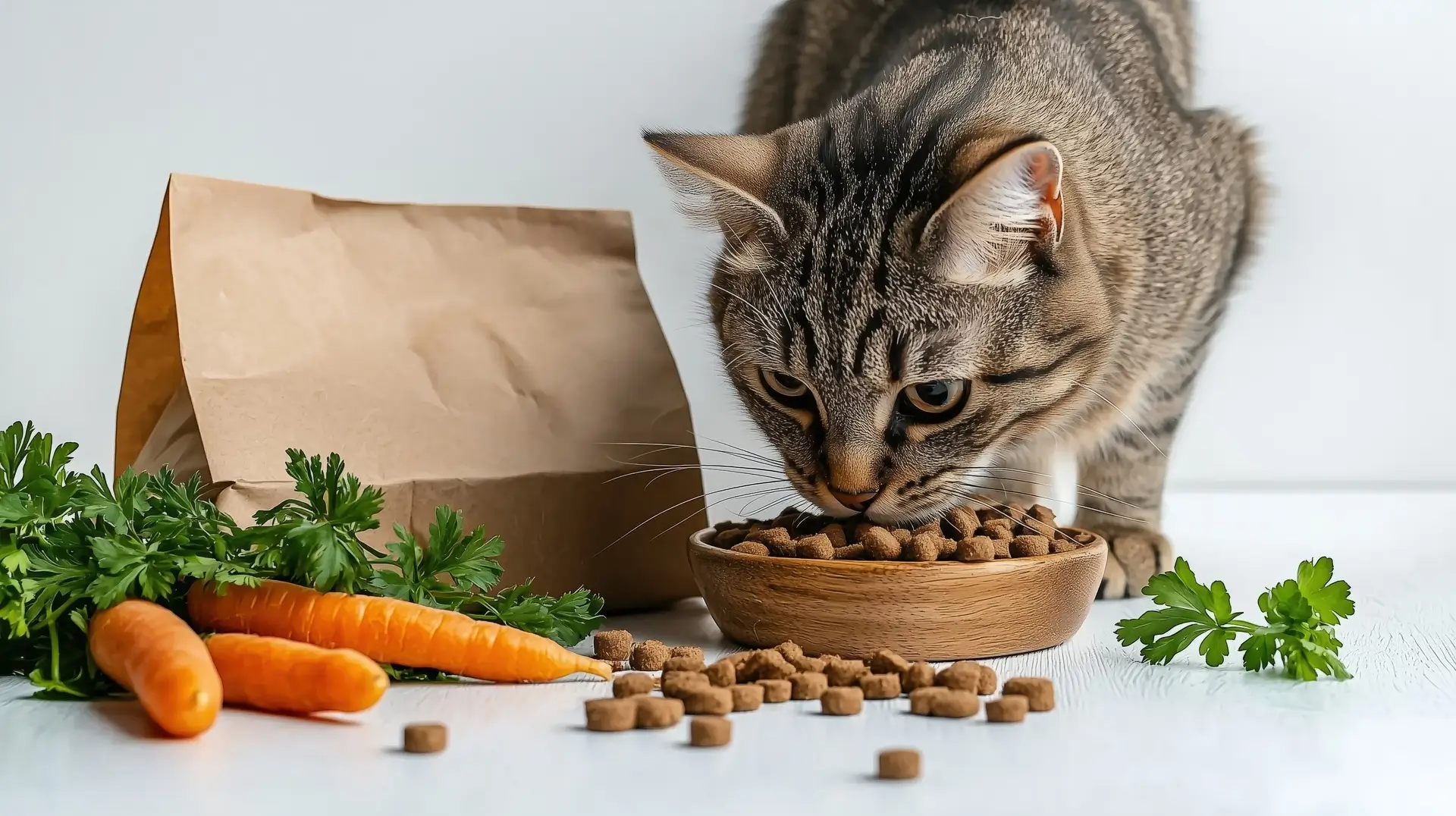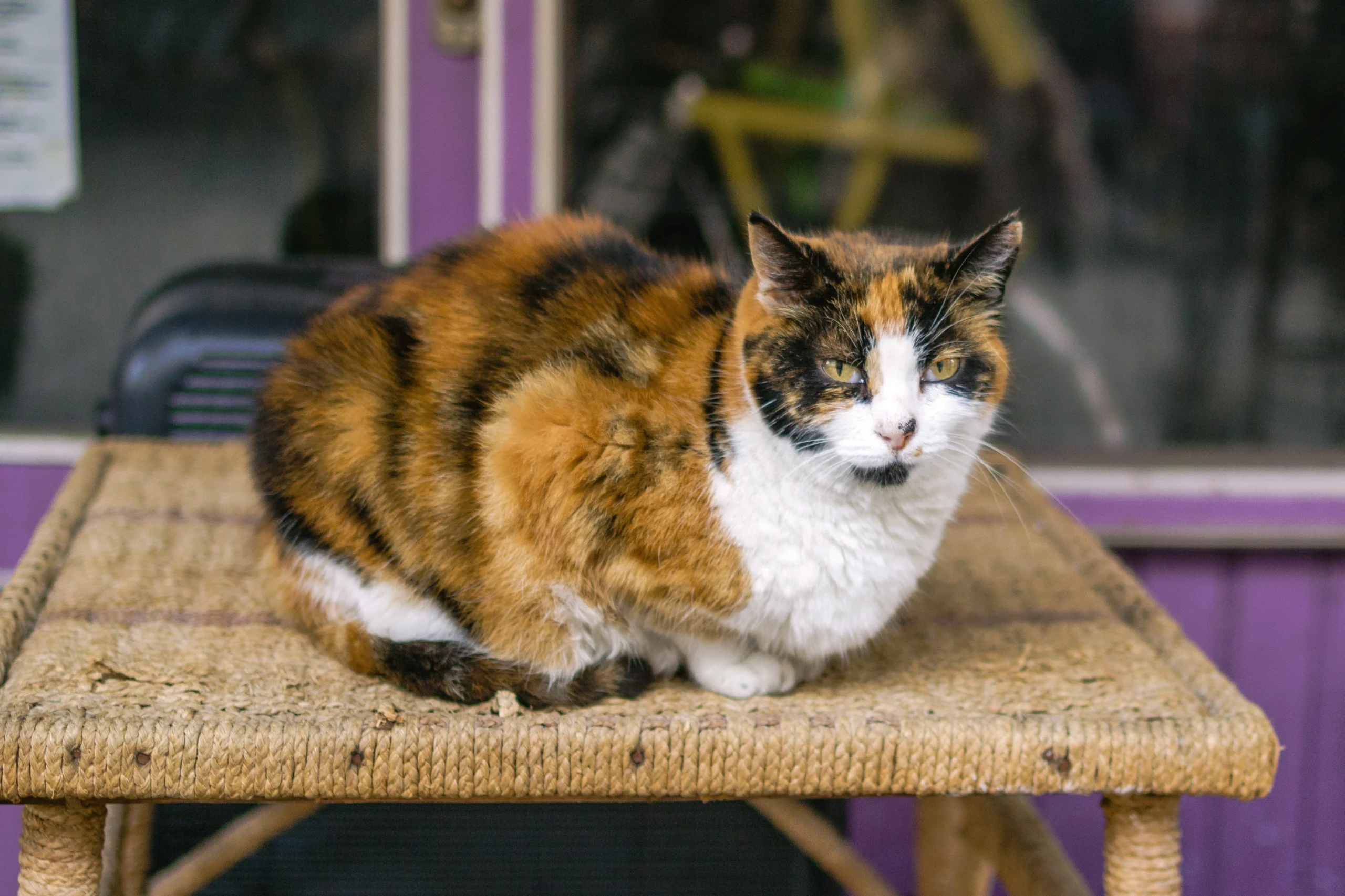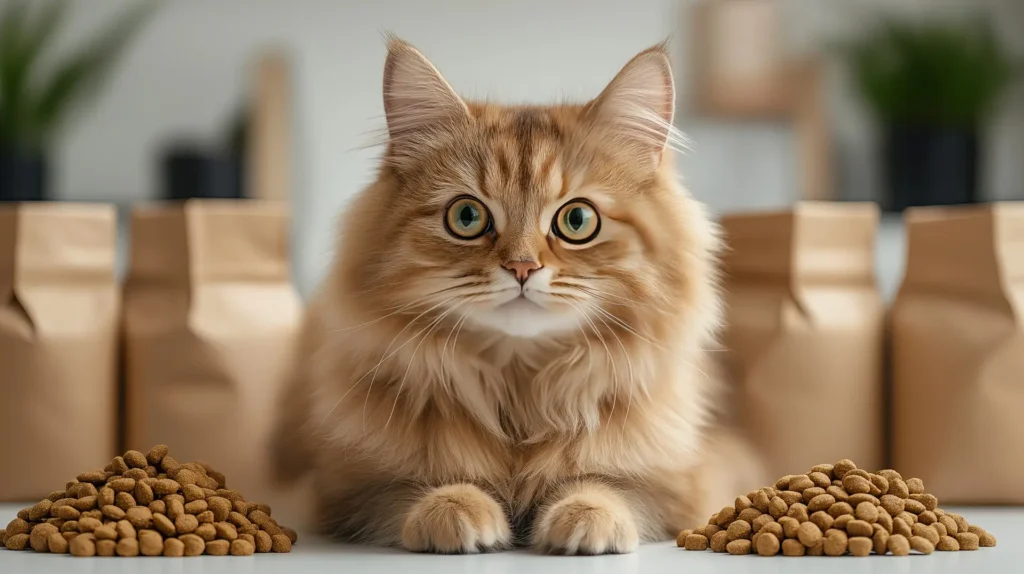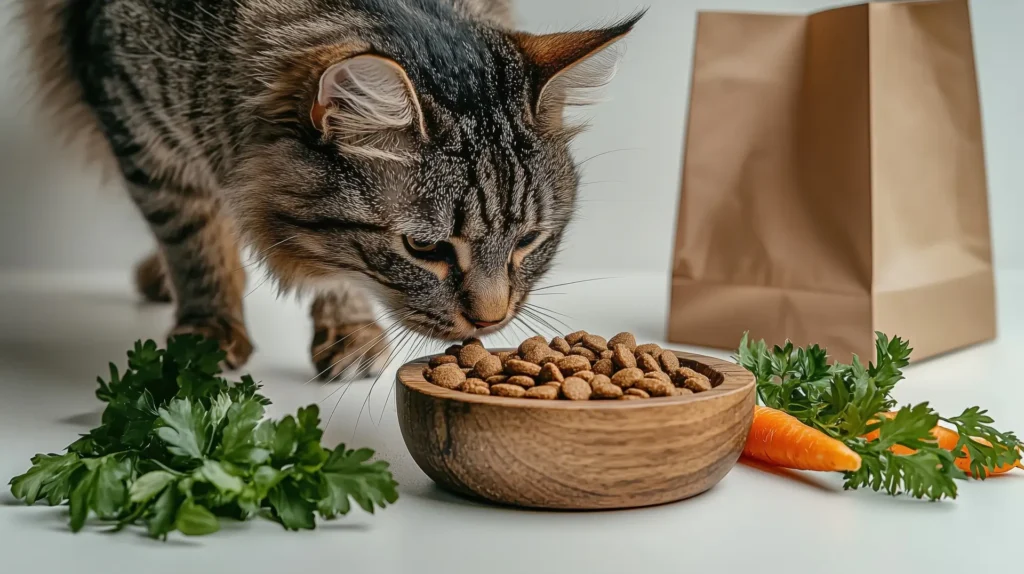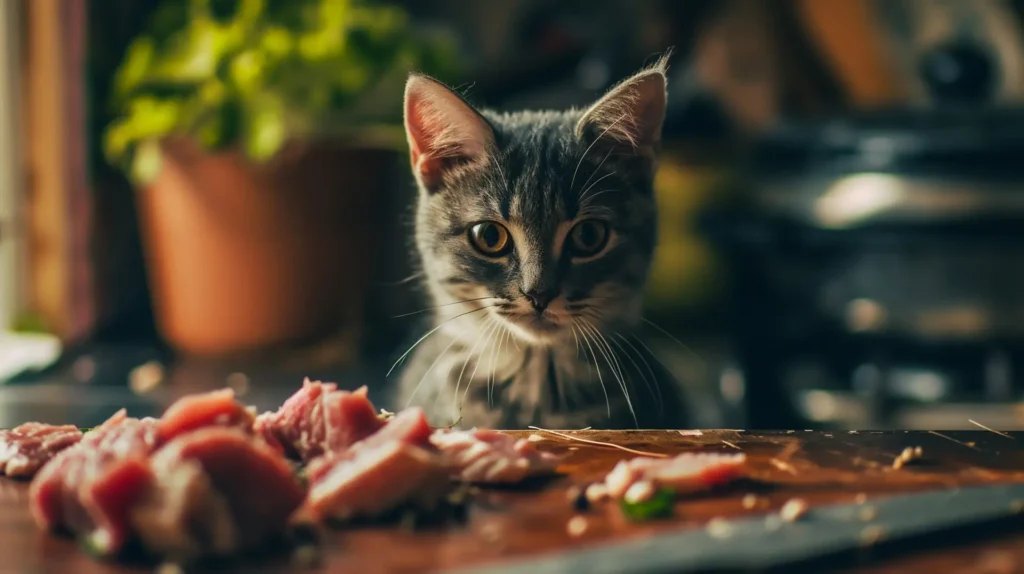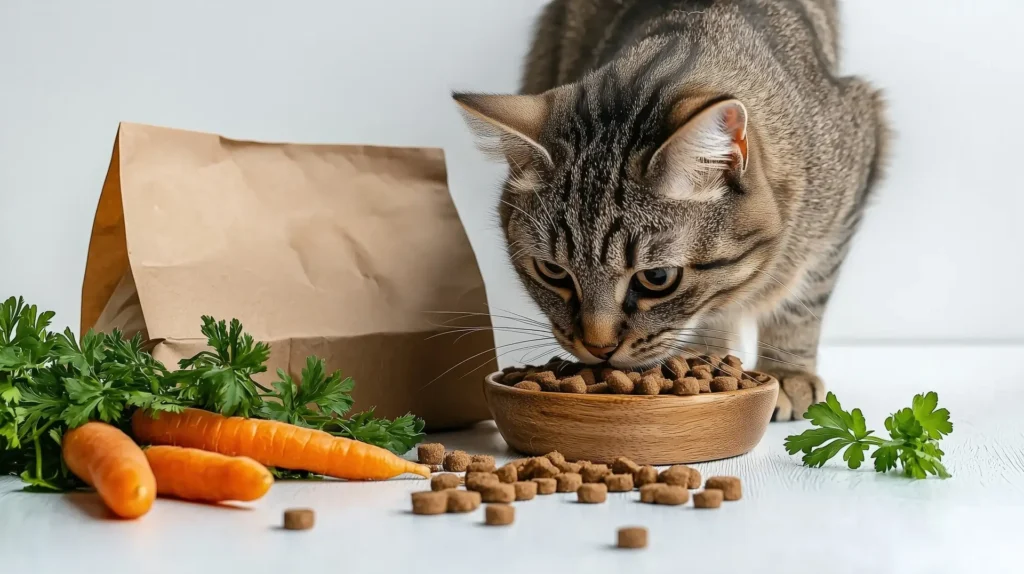The pet food aisle feels like a confusing maze. Facing walls of colorful bags, most cat owners feel stressed about choosing the right diet. This feeling comes from a true understanding: proper nutrition is the most vital factor in your cat’s long-term health and energy. Finding the best, most nourishing diet means looking past clever marketing. You must first understand your cat’s specific biological needs. Cats are obligate carnivores. This means they must eat meat to truly thrive and survive. This guide cuts through the noise. It gives you a science-backed plan for selecting genuinely healthy cat food. This food will promote long life, manage weight, and prevent many diseases.
Core Nutritional Balance of Healthy Cat Food
Cats are not just tiny dogs or little people. Their bodies handle nutrients in a completely unique way. Their metabolism works almost entirely on protein and fat. That’s why a diet with the correct nutritional balance is absolutely essential.
The 5 Non-Negotiables
Your cat requires nutrients best utilized from animal tissue. If you think of your cat as a tiny, highly specialized athlete, these are the five things it needs to perform daily.
- Protein: Cats need a lot of Crude Protein. Their liver constantly breaks down protein for energy. If their cat’s diet lacks enough quality meats, their body will start wasting its own muscle tissue.
- Taurine: This is one of the most critical nutrients. Cats cannot make enough Taurine themselves. It is found exclusively in animal tissue. A lack of it can cause severe heart failure and blindness.
- Fats and Fatty Acids: Fats give your cat primary energy. They provide essential fatty acids, like Arachidonic Acid. Cats cannot create these from plant oils. Omega-3 fatty acids are vital for a healthy coat and reducing inflammation.
- Vitamins: Cats need preformed Vitamin A and Niacin (Vitamin B3). Unlike other animals, cats don’t have the right enzymes. They cannot convert plant sources into these usable essential vitamins and minerals.
- Carbohydrates: Cats have no biological need for carbohydrates. They can digest them, but high carbs lead to obesity and diabetes risk. Look for cat food with a low carbohydrate profile. Ideally, it should be less than 10 percent on a Dry Matter Basis.
The Moisture Factor
The biggest difference between healthy wet cat food and kibble is the moisture content. Cats evolved from desert animals. Because of this, they naturally have a low thirst drive. They are just not good water drinkers. Wet food significantly helps daily hydration. This is vital for preventing Kidney Disease and lower Urinary Tract issues.
How to Read a High Quality Cat Food Label
Choosing a high quality cat food means you must become an expert label reader. The most important quality indicator is not marketing. Ignore phrases like “natural ingredients” on the front. Look at the compliance statements and ingredient sourcing.
The AAFCO Statement – Your Quality Seal
Always check for the Association of American Feed Control Officials (AAFCO) statement. This is the quality gold standard. It states the brand meets nutritional levels for the cat’s specific Life Stage.
- Life Stage: Be sure the food fits your cat’s life stage. This can be Growth/Kitten, Adult Maintenance, or All Life Stages.
- What it Doesn’t Guarantee: AAFCO guarantees nutritional adequacy. This means nutrient minimums and maximums are met. It does not promise the quality, digestibility, or source of the ingredients.
The Ingredients List: Fact vs. Fiction
The first three to five ingredients are the most important.
- First Ingredients: The first ingredient must be a named animal protein. Examples are “Chicken,” “Salmon,” or “Beef.” Be careful if generic terms are the only protein source.
- Myth-Busting “By-Products” and “Meals”:
- Chicken Meal: This is simply chicken tissue cooked and dried to remove water. It is a highly concentrated source of high protein content. Don’t be afraid of it.
- By-products: These are defined as clean parts of a carcass. They include nutrient-dense organs like the liver and kidneys. Organ meats are a fantastic source of vitamins and minerals. They are perfectly appropriate for a cat’s diet.
- The Carbohydrate Trap: The Guaranteed Analysis (GA) shows protein and fat percentages. To find the true content of carbohydrates in dry food, you must calculate the Dry Matter Basis (DMB). This calculation often exposes the high carb load hidden in kibble.
What to Avoid
While some ingredients are controversial, minimize or avoid these:
- Onion and Garlic Powders: These are harmful to cats.
- Excessive Artificial Dyes: These are added for human appeal, not your cat’s nutrition.
- High Sugar Content: Cats cannot taste sweetness. Sugar just adds empty carbohydrate calories.
Visit Love Your Pets Daily for more tips on your loved pets.
Dry vs. Wet vs. Other Forms
When selecting a commercially prepared diet, you must balance things. Compare the benefits of each food format with your cat’s needs and your budget.
Wet Food
Healthy wet cat food is usually the top choice for feline health.
- Pros: It has extremely high moisture content (up to 80 percent). This is essential for Urinary Tract and kidney health. It has a high protein content and is naturally low in carbohydrates. Canned cat food, healthy options are easily available.
- Cons: It costs more. Once opened, you must use it quickly. It doesn’t offer any dental benefits.
Dry Kibble
- Pros: It is cost-effective. It’s convenient for grazing. Some Dental Health formulas can help clean teeth.
- Cons: It has very low moisture content (about 10 percent). This makes hydration difficult. It must contain a high percentage of carbohydrates to hold its shape.
Fresh Cat Food Delivery and Other Formats
- Fresh/Human-Grade: Brands like Small’s cat food or Freshpet cat food offer appealing, gently cooked food. It often boasts superior digestibility. These foods have excellent nutritional balance and high protein levels. They are typically the most expensive choice. This category includes many of the best fresh cat food options. They are often available through a wet cat food subscription.
- Raw Diets: If you consider a raw diet, be extremely cautious. Uncooked food risks bacterial contamination for both the pet and the owner. Also, getting the nutritional balance right is incredibly hard. The energetic needs of a working dog, like the Australian Cattle Dog, stand in contrast to a sedentary house cat’s diet.
Healthy Cat Food for Specific Life Stages and Health Concerns
Your cat’s food needs change a lot throughout its life stages.
Kitten
Kittens need a food labeled for Growth. This formula is packed with calories, fatty acids (for brain development), calcium, and phosphorus. These support their fast development. Scheduled feeding your cat helps manage their blood sugar.
Adult Maintenance
Most cats fall into this group. The main goal is portion control to keep an Ideal Body Condition. If you have indoor cats, look for healthy cat food, pet food for indoor cats, and formulas. They usually have slightly lower calories for a less active lifestyle.
Senior Cat
Many owners wrongly think senior cats need less protein. The reverse is true. Senior cats need a highly digestible, high protein content diet. This combats muscle loss that comes with age. Just like a classic hero dog, the Lassie Dog, needs strong muscles, a senior cat needs a strong protein foundation.
Managing Common Issues Through Diet
- Obesity/Weight Loss: The best path is strict portion control. Switch to a low-carbohydrate, wet, healthy cat food. Wet food makes them feel fuller. It provides fewer empty calories. This is the main goal of healthy weight cat food.
- Urinary Health: This issue is mostly about hydration. Focus on healthy wet cat food. This keeps the urine diluted. Diluted urine prevents the formation of stones. Formulas that control Magnesium and Phosphorus are also helpful.
- Sensitive Stomachs: Look for Limited Ingredient Diets (LIDs). Or, try alternative protein sources (like duck or venison). This helps find and eliminate the cause of the allergy. However, a cat’s primary focus must always be on moisture for good kidney health.
Feeding Strategy, Budget, and When to Call the Vet
Choosing the healthy cat food is just one step. How you feed your cat is equally important.
Feeding Behavior and Enrichment
Cats are natural hunters. They prefer to eat small meals throughout the day (grazing).
- Puzzle Feeders: Use puzzle feeders to make your cat “hunt” for its kibble. This keeps their mind active. It also slows their consumption. This is great for healthy weight cat food management.
- Bowl Choice: Use wide, shallow bowls. This prevents whisker fatigue. Never place the food bowl near the litter box. Cats are clean and will often avoid eating near their waste area.
- Litter Box Odor Control: A high protein content and digestibility create less waste. This leads to better litter box odor control.
Budget vs. Quality Healthy Cat Food
The best healthy cat food pet food isn’t always the most costly. When you choose a food, make sure it does three things:
- Meets the AAFCO standards for the appropriate life stage.
- Has a veterinary nutritionist on staff.
- List a named animal protein as the first ingredient.
It’s a good idea to buy a reputable brand’s mid-tier canned cat food healthy line. This offers the best value and quality. Always choose a food you can consistently afford.
When to Consult Your Vet
If your cat has a chronic health issue (like Diabetes or Kidney Disease), you must consult a professional. Talk to your veterinarian or a Board-Certified Veterinary Nutritionist (BCVN). They can recommend prescription diets. These therapeutic diets are specifically tailored to meet complex needs. When researching care for a breed, you’ll see that BCVN oversight is considered the gold standard for all species.
FAQ
What brand of cat food is the healthiest for cats?
The “healthiest” brand changes based on the cat’s life stage and overall health. However, brands backed by veterinary science and research, like Purina Pro Plan, Hill’s Science Diet, and Royal Canin, are highly recommended. This is because they invest in nutritional science and feeding trials.
What are some healthy cat food brands?
Besides the major veterinary brands, many smaller healthy cat food brands focus on high protein content and natural ingredients. Brands like Smalls cat food, Open Farm, and Tiki Cat are very popular. They are known for transparency, using quality meats, and offering moisture-rich canned cat food healthy options.
What is the best cat food by health?
The best cat food for health is usually a wet formula. It has a high protein content (over 40 percent DMB) and a low carbohydrate profile (under 10 percent DMB). This diet closely matches a cat’s natural diet. It supports hydration for urinary and kidney function. It is an excellent choice for healthy weight cat food and disease prevention.
What is a healthy weekly menu for a cat?
A healthy weekly menu should mainly consist of a complete and balanced healthy wet cat food diet. This should be fed in small, regular meals. You can add enrichment with cat treats (less than 10 percent of total calories). You can also offer a small amount of unseasoned, cooked meat as a high protein content treat.
What is the best food for cats of multiple ages?
In homes with both adult cats and kittens, choose a commercially prepared cat food labeled for “All Life Stages” by AAFCO. This food contains all the extra nutrients and calories a kitten needs to grow. The adult cat can also eat it safely. This ensures nutritional balance for every cat in your home.

